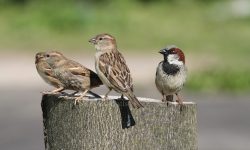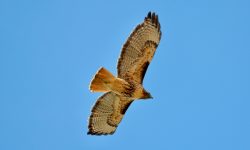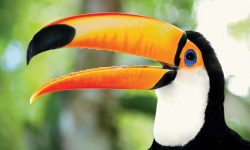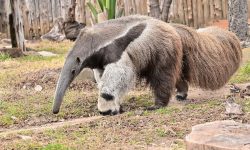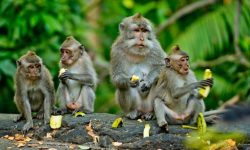Penguins are more than just charming birds in tuxedos—they are masters of survival in some of the harshest environments on Earth. From huddling for warmth to raising chicks in vast colonies and evading predators at sea, their social behavior plays a crucial role in staying alive. But why has group living become such a defining feature of penguin life? The answer lies in a remarkable set of evolutionary strategies, where cooperation means survival. Let’s uncover the science behind why penguins live—and thrive—in groups.
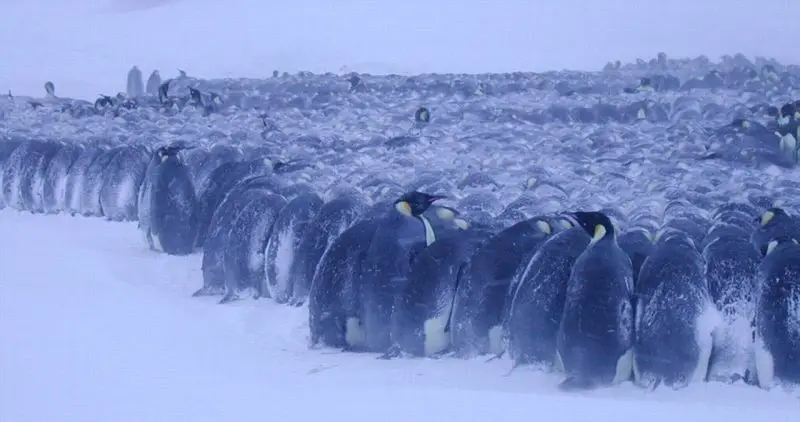
Thermoregulation: Staying Warm Together
Huddling to Beat the Cold
In the heart of Antarctica, where icy winds howl across the desolate plains and temperatures plunge below -60°C (-76°F), survival demands extraordinary adaptation. For Emperor Penguins—the largest and most cold-hardy of all penguin species—the key to withstanding such bone-chilling conditions lies not in solitude, but in unity. They form massive huddles, sometimes composed of thousands of individuals, pressing their bodies tightly together in what may look like a giant, living puzzle of black and white feathers.
This is no random crowd. The huddle is a sophisticated natural strategy, a collective shield against the cold. Each penguin contributes a small amount of body heat, and when thousands are packed closely, that warmth accumulates. Within the core of a dense huddle, the temperature can soar up to 37°C (98.6°F)—human body temperature—while the outside world remains frozen in arctic misery. This astonishing temperature contrast is not just comfort—it’s the difference between life and death during the endless polar night.
Coordinated Movement Within the Huddle
Yet the genius of the huddle goes beyond mere proximity. It’s a constantly shifting, coordinated dance of survival. Penguins on the outermost edge face the brunt of the cold, but they do not remain exposed for long. With incredible synchronization, the birds take tiny steps, subtly nudging inward while those who’ve enjoyed the warmth of the center move toward the perimeter. This slow, wave-like motion circulates every individual through different thermal zones, ensuring that no one remains vulnerable for too long.
What appears static to the human eye is actually a living system, one that balances cooperation and self-preservation with astonishing precision. Scientists have likened the mechanics of penguin huddles to particle physics or even human-engineered traffic flow systems. But penguins don’t use formulas—they rely on instinct, evolution, and the collective intelligence of the group. Every movement, every shift of position, is part of a silent choreography honed over millennia.
Through this communal effort, penguins not only conserve energy and body heat but also drastically reduce heat loss due to wind exposure. Their feathers are tightly interlocked, waterproof, and wind-resistant, but it’s the unity of the group that forms their true insulation. Alone, a penguin cannot survive the brutal Antarctic winter. Together, they become a fortress of warmth and resilience—nature’s most elegant response to an unforgiving world.
Safety in Numbers: Protection from Predators
Reducing Individual Risk
In the wild, penguins are far from invincible. Whether on land or in the icy waters they call home, predators lurk—ever watchful, ever hungry. From the stealthy leopard seal that lies in wait beneath the sea ice, to the swift and aggressive skua that snatches chicks from rocky outcrops, threats are everywhere. But penguins don’t face them alone. One of their most powerful defenses is the sheer size of their colonies.
When thousands of penguins huddle together, the odds shift in their favor. This natural defense strategy is known as the dilution effect—a safety-in-numbers tactic where the risk of any single individual being caught decreases dramatically in a large group. For a predator, singling out one bird in a sea of identical, moving bodies becomes not only difficult but also inefficient. Confusion reigns in the chaos of motion, sound, and sheer numbers, turning the hunt into a frustrating game of chance.
For example, when penguins plunge into the ocean to hunt, they often do so in waves. By leaping together into the water, they overwhelm the predator’s ability to focus, making it far more difficult for a leopard seal to select and isolate a single target. It’s not just a strategy—it’s survival through coordinated courage.
Shared Vigilance
Beyond the protection of numbers, penguins also rely on the eyes and ears of the group. In a bustling colony where thousands of pairs are nesting, feeding, and preening, no one bird can afford to be alert every second. Fortunately, they don’t have to. Penguins benefit from collective vigilance—a shared watchfulness that amplifies the group’s overall awareness.
If a threat approaches, it only takes one penguin to notice. A sharp vocalization, a sudden movement, or the unmistakable posture of alarm can ripple through the colony in seconds. This rapid response system allows the entire group to react nearly instantly, whether it means taking to the sea, shielding chicks, or forming defensive clusters.
In the ocean, this same alertness translates to coordinated dives and evasive swimming patterns. A warning splash or a change in movement from one bird can trigger the rest to scatter, dive deeper, or change direction—making the predator’s job exponentially harder.
In both land and sea, penguins have turned group living into a defense mechanism of remarkable efficiency. Through shared risk, alertness, and strategic confusion, they have learned to outmaneuver even the most cunning of hunters. Alone, a penguin is easy prey. But together, they become a moving, watching, and highly responsive unit—a force far more difficult to conquer.
Reproduction and Parenting in Colonies
Nesting in Massive Colonies
When the breeding season arrives, penguins return en masse to ancient nesting grounds, forming sprawling colonies known as rookeries. These bustling cities of feathers, flippers, and ceaseless calls may stretch for miles and contain tens of thousands of breeding pairs, all gathered on icy plains or rocky shores with a single shared goal: to reproduce and raise the next generation.
This crowding is far from chaotic. It’s a well-honed strategy that gives penguins a crucial edge. In these dense clusters, the sheer number of birds creates a barrier of bodies, making it difficult for predators to pick off individual eggs or chicks. Every bird acts as part of a living shield, and while not all nests will succeed, the collective presence dramatically increases the survival odds for many.
Among Emperor Penguins—the only birds known to breed during the Antarctic winter—the stakes are especially high. After laying a single egg, the female embarks on a weeks-long journey across frozen wastelands to forage at sea. Meanwhile, the male remains behind, carefully balancing the egg on his feet and covering it with a fold of warm skin known as the brood pouch. With no food and exposed to temperatures that can freeze flesh in minutes, he endures the long, dark polar night surrounded by thousands of fellow fathers. Together, they form tight huddles, their shared body heat not only keeping themselves alive but also safeguarding the fragile lives beneath their bellies. Without this collective warmth and protection, neither parent nor chick would stand a chance.
Recognizing Individuals by Sound
Amid the overwhelming sea of nearly identical birds, a miracle of recognition unfolds every day. Penguins don’t rely on sight to find their families—they rely on sound. Each penguin possesses a unique vocal signature, a distinct call that functions like a fingerprint. These calls are finely tuned and deeply familiar, allowing mates and parents to find one another with astonishing precision.
When a female returns from weeks of feeding at sea, she steps into a rookery teeming with noise and movement. Yet with just a few calls exchanged through the cold wind, she can locate her mate among thousands. Similarly, a chick—covered in fluffy down and surrounded by a chorus of cries—can call out to its parent and be recognized instantly. This remarkable acoustic recognition ensures that food goes to the right chick and that family bonds are maintained even in the most overwhelming of crowds.
This finely evolved communication system is one of the marvels of penguin life. In a world where sight is limited by snowstorms and visual cues are often useless in vast, monochrome colonies, sound becomes the thread that holds families together. It’s a testament to the deep social intelligence of penguins, and a reminder that even in the most extreme environments, care, connection, and memory still prevail.
Foraging Benefits of Group Living
Cooperative Feeding Strategies
The ocean may appear vast and empty, but beneath the surface, it’s a high-stakes battlefield. For penguins, every dive is both a hunt and a hazard. Fortunately, they don’t plunge into the depths alone. Many penguin species exhibit a form of loosely coordinated foraging, where individuals swim in groups that enhance the efficiency of their hunt—even if they aren’t strictly cooperating like a wolf pack.
When penguins swim together, their synchronized movements can drive fish or krill into dense, panicked schools. Trapped between hungry predators below and the surface above, the prey becomes easier to catch. In these moments, each penguin benefits from the group’s motion, as the availability of food increases and the chase becomes more manageable. This strategy is especially effective when targeting fast-moving prey like anchovies, sardines, or Antarctic krill, which can be herded and cornered with surprising ease by a wall of beaks and flippers.
The presence of many hunters in the same area also generates a secondary advantage: prey displacement. As one penguin dives, its sudden movement may spook a swarm of fish upward, allowing another bird closer to the surface to make the catch. This dynamic interplay means that even if penguins aren’t explicitly working together, the sheer volume of their activity inadvertently boosts everyone’s chances of success.
Safety While Swimming
Beneath the waves, penguins face some of their deadliest predators. Orcas, leopard seals, and even sharks patrol the frigid waters, waiting for the moment a lone penguin makes a vulnerable move. But when penguins swim in large, active groups, they reduce their risk of becoming the next target. It’s a classic case of confusion as a defense.
To a predator’s eye, a group of penguins darting in all directions creates a visual overload. Tracking a single individual becomes difficult amid the flashing reflections of many streamlined bodies, all moving with remarkable speed and agility. This confusion gives each penguin a critical edge—just enough time to dodge, dive deeper, or break away from danger.
Moreover, a group’s constant movement presents multiple threats to a predator’s success. An orca may charge, but the splintering response of dozens of penguins forces it to readjust mid-attack. A leopard seal might strike, but if the group scatters in a burst of speed and foam, its strike may miss entirely. In this sense, a group of penguins behaves like a single, shifting organism—adaptive, elusive, and remarkably hard to catch.
By swimming together, penguins turn the vast and perilous ocean into a more navigable realm. They amplify their hunting power while diluting their individual risk—a dual benefit that underscores just how vital group life is, even beneath the surface of the sea.
Social Learning and Communication
Learning Through Observation
For penguins, survival isn’t just instinct—it’s also learned. From the moment a chick hatches in the harsh, crowded environment of a rookery, it begins absorbing lessons from the world around it. In these massive social settings, young penguins gain access to a living classroom, where adults unknowingly serve as constant teachers.
They observe how older penguins waddle across treacherous ice, avoid aggression from neighbors, or leap into the ocean with precise timing. They watch how adults preen their feathers to stay waterproof and how they respond instantly to alarm calls. When it’s time to venture toward the sea for the first time, juvenile penguins often mimic the timing and movements of older individuals—learning not just where to go, but how to survive the journey.
Group living accelerates this learning curve. A chick doesn’t just have its parents to imitate—it has thousands of role models. Whether it’s understanding the safest path through a crowded rookery or interpreting the subtle body language of its peers, every social interaction becomes a lesson. These observational experiences lay the foundation for adult behaviors and improve the young penguin’s chances of thriving on its own.
Complex Communication Systems
In such densely packed colonies, where chaos could easily reign, penguins rely on sophisticated communication to keep the social order intact. Their methods are impressively diverse, combining vocalizations, body movements, and postures into a complex language that governs nearly every aspect of their lives.
Each species of penguin has its own vocal “dialect,” but across the board, sounds serve many functions: attracting mates, defending territory, locating chicks, warning of predators, or even expressing discomfort. These calls range from rhythmic braying and trilling to deep honks and piercing screeches, and are often unique to individuals—especially between mates and parents with chicks. In a colony of thousands, this acoustic signature is essential for family recognition and bonding.
But communication isn’t just vocal. Penguins use postures and physical cues in subtle but meaningful ways. A raised flipper may signal irritation, a low bow could be a courtship gesture, and a rigid upright stance often signals vigilance or threat. These signals help reduce conflict in crowded spaces and reinforce social hierarchies, ensuring the colony functions without descending into disorder.
What’s truly remarkable is how penguins have developed these tools without language, writing, or long-distance technology. Their survival depends on interpreting minute social cues in real time, in environments where every second counts. In a storm of snow, calls, and feathers, communication becomes not just useful—it becomes life-sustaining.
Through observation and expression, penguins have created a culture of shared survival. It is a testament to their intelligence and adaptability, reminding us that even in the coldest, harshest places on Earth, the foundations of society—learning, listening, and connection—still thrive.
Evolutionary Advantage of Living in Groups
The social nature of penguins is no accident—it is the result of millions of years of evolutionary refinement. In the unforgiving environments they inhabit, from Antarctica’s ice deserts to the rocky coasts of South America and New Zealand, only the most adaptable behaviors have endured. Among those, group living stands out as one of the most powerful evolutionary tools in the penguin’s survival arsenal.
Natural selection does not favor weakness or isolation in such environments. Instead, it rewards traits that increase the chances of both survival and successful reproduction. Penguins that huddled for warmth, watched for danger together, foraged more effectively in groups, or raised their chicks within the safety of a colony were more likely to pass on their genes. Over time, these behaviors became hardwired—transformed from instinctive responses into core elements of penguin life.
Communal living enhances nearly every aspect of penguin biology. It allows them to conserve precious body heat in freezing temperatures, reducing the metabolic cost of thermoregulation. It protects individuals from predators through both confusion and cooperation. It enables more efficient foraging by amplifying hunting success and reducing individual vulnerability. And perhaps most importantly, it provides a social structure that supports complex parental care—from incubation to chick recognition to long-term bonding between mates.
These advantages do not exist in isolation. They compound and reinforce one another, creating a self-sustaining social system where cooperation leads to higher reproductive success. As colonies grew larger and social behaviors became more complex, penguins evolved not only physical adaptations—such as streamlined bodies or waterproof feathers—but also deeply rooted communal instincts that continue to shape their lives today.
What we see in modern penguin colonies is the legacy of countless generations of selection pressure. Behind every huddle, every coordinated dive, every call echoing across a rookery is a blueprint carved by time—evidence that in the harshest places on Earth, survival doesn’t belong to the strongest or the fastest, but to those who come together.
Conclusion: The Power of Penguin Unity
Group living is more than a social trait in penguins—it’s a critical survival strategy. In the freezing deserts of Antarctica and beyond, these birds have turned community into strength. Through cooperation, vigilance, warmth, and shared responsibility, penguins prove that in nature, there is indeed power in numbers. Alone, they freeze or fall. Together, they thrive.


